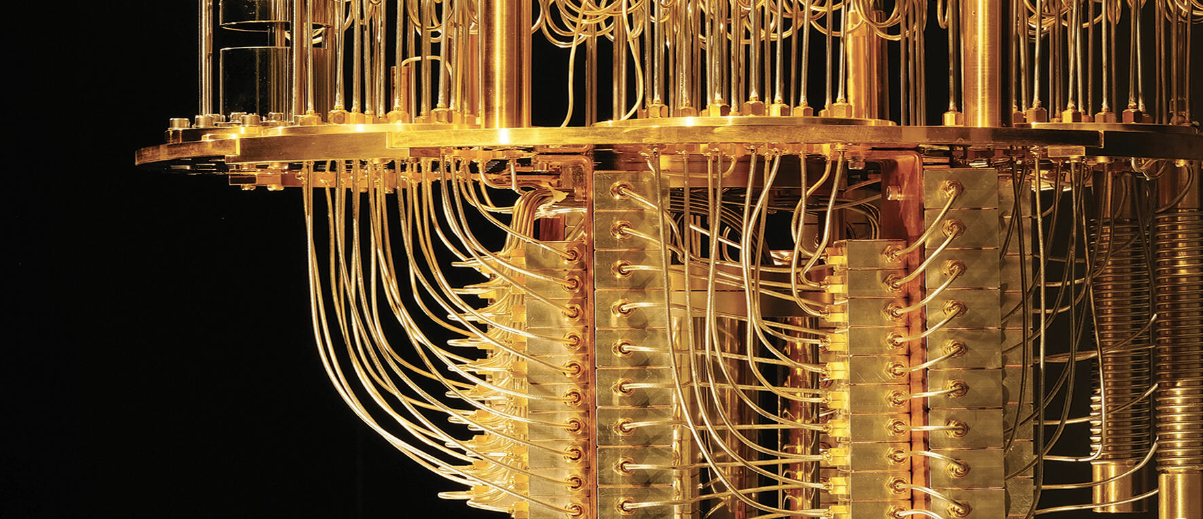Q-Day is Coming: Is Your Storage Quantum-Safe?

```html
The Quantum Cryptography Imperative: Safeguarding Data in a Post-Quantum World
The Looming Threat of Q-Day
The whispers about "Q-Day"—the day quantum computers shatter current encryption—are growing louder. Experts, including the NSA and NIST, predict this cryptographic apocalypse could arrive as early as 2033. Imagine a world where financial transactions, government secrets, and personal data encrypted with RSA-2048 or ECC become easily decipherable by quantum computers. It's not science fiction; it's a rapidly approaching reality.
Even more concerning is the "harvest now, decrypt later" (HNDL) strategy already employed by cybercriminals. Sensitive data stolen today could be decrypted tomorrow, making quantum-safe security an immediate priority.
The Quantum Leap: Advancements in Quantum Computing
The quantum race is accelerating at breakneck speed. Google's Willow chip recently performed a calculation in minutes that would take the world's fastest supercomputer 10 septillion years. IBM and AWS are developing quantum-safe cloud solutions, solidifying the shift to post-quantum cryptography (PQC) as a necessity, not a luxury.
With breakthroughs in error correction and qubit scaling, the gap to Q-Day is closing faster than anticipated. Companies ignoring this shift risk compliance violations, devastating data breaches, and irreparable reputational damage.
How Many Qubits to Break the Code?
The magic number of qubits needed to crack current encryption isn't fixed. It depends on the algorithm targeted and the attack strategy. Estimates for breaking RSA-2048, a common encryption standard, typically range from 2,000 to 10,000 logical qubits using Shor's algorithm. Even symmetric encryption methods like AES-256 are vulnerable to quantum attacks, emphasizing the urgency for PQC adoption.
Key Players in the Quantum Arms Race
Industry giants are rising to the challenge. Amazon's innovative Ocelot chip promises to drastically reduce the cost of quantum error correction. Google's Willow demonstrates exponential error suppression, paving the way for more stable and reliable quantum systems. IBM leads in post-quantum cryptography, with two algorithms, CRYSTALS-Kyber and CRYSTALS-Dilithium, now NIST-approved standards.
Microsoft's Majorana 1 chip, powered by a topological core, aims to shorten the development timeline for meaningful quantum computers. Dell focuses on hardware-based encryption and strategic PQC implementation across its product portfolio.
Becoming Quantum-Safe: A Strategic Transition
Being quantum-safe requires securing your entire IT infrastructure – servers, storage, networks, and applications. This involves transitioning to NIST-approved PQC algorithms and embracing cryptographic agility—the ability to swiftly swap encryption algorithms as new vulnerabilities emerge.
From Broadcom's focus on secure connectivity with its Emulex HBAs to NetApp's Quantum-Ready Data-at-Rest Encryption solution, vendors are actively developing solutions to help organizations achieve quantum resilience.
Preparing for the Quantum Future: A Call to Action
The quantum computing threat is real. Waiting for Q-Day is a recipe for disaster. The time to act is now. Assess your quantum risks, review NIST’s PQC recommendations, and explore vendor roadmaps. The transition to quantum-safe security is not a sprint; it's a marathon, and those who start preparing today will cross the finish line securely.